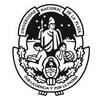Swine influenza: clinical, serological, pathological, and virological cross-sectional studies in nine farms in Argentina
Author details:
Background: Influenza A viruses (IAV) are important pathogens responsible for economic losses in the swine industry and represent a threat to public health. In Argentina, clinical, pathological, and virological findings suggest that IAV infection is widespread among pig farms. In addition, several subtypes of IAV, such as pH1N1, H3N2, d1H1N1, and d2H1N2, have been reported.
Objectives: To evaluate the infection patterns of influenza virus in nine pig farms in Argentina.
Methods: Clinical, serological, pathological, and virological crosssectional studies were conducted.
Results: Clinical and pathological results were characteristic of endemic influenza infection in eight of the nine farms studied. By rRT-PCR, six of the nine farms were positive to influenza. Five IAV were obtained. Genome analysis determined that four of the isolations were pH1N1 and that the remaining one was a reassortant human origin H3N2 virus containing pandemic internal genes. Serological results showed that all farms were positive to influenza A antibodies. Moreover, the hemagglutination inhibition test showed that infection with viruses containing HA′s from different subtypes (pH1, d1H1, d2H1, and H3) is present among the farms studied and that coinfections with two or more subtypes were present in 80.5% of positive pigs.
Conclusions: Because vaccines against IAV are not licensed in Argentina, these results reflect the situation of IAV infection in nonvaccinated herds. This study provides more information about the circulation and characteristics of IAV in a poorly surveyed region. This study provides more data that will be used to evaluate the tools necessary to control this disease.
Keywords: Argentina, influenza, pathology, serology, swine, virology.
Abstract published in Influenza and Other Respiratory Viruses 7(Suppl. 4), 10–15. DOI:10.1111/irv.12200.












